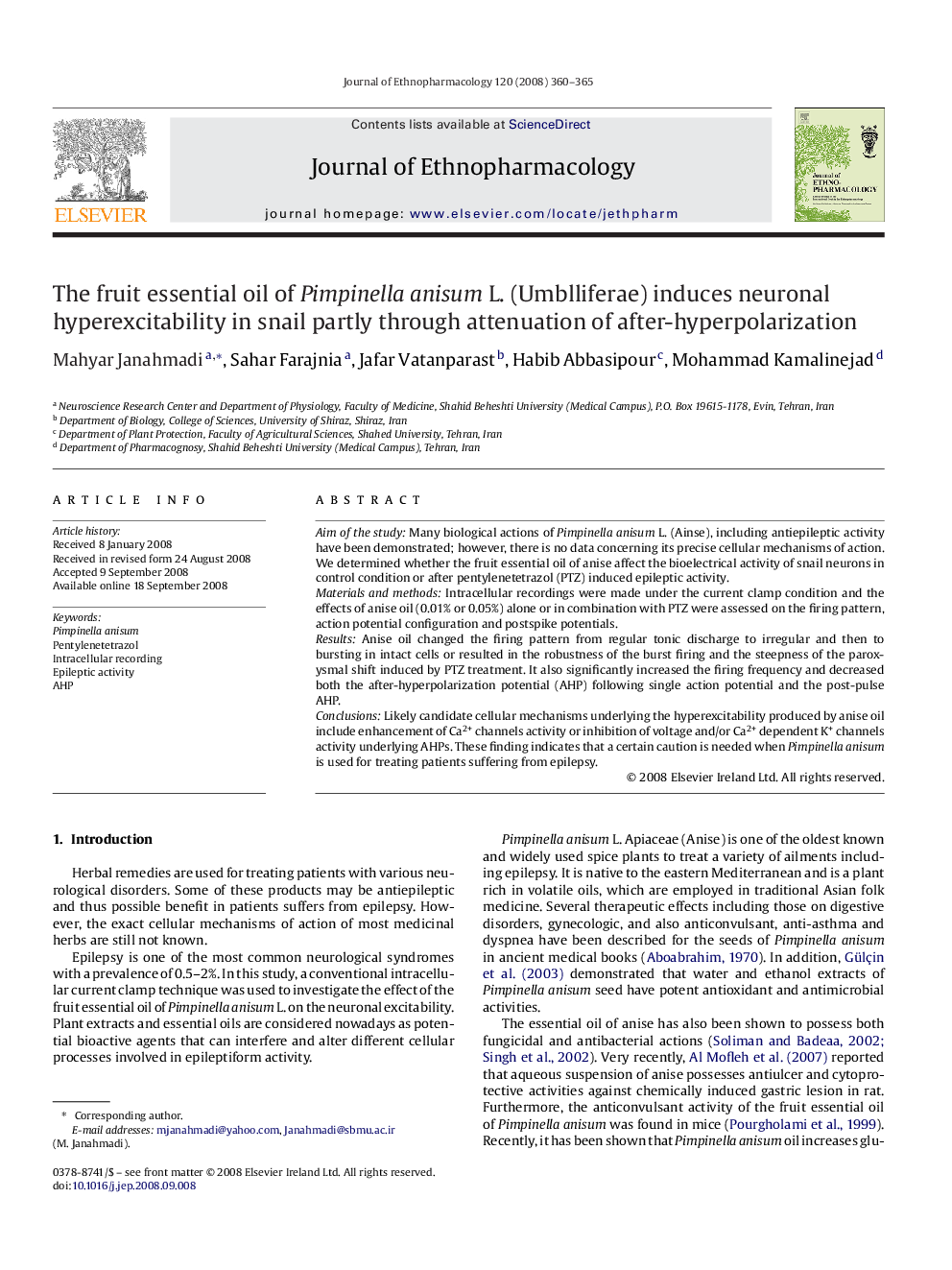| Article ID | Journal | Published Year | Pages | File Type |
|---|---|---|---|---|
| 2546305 | Journal of Ethnopharmacology | 2008 | 6 Pages |
Aim of the studyMany biological actions of Pimpinella anisum L. (Ainse), including antiepileptic activity have been demonstrated; however, there is no data concerning its precise cellular mechanisms of action. We determined whether the fruit essential oil of anise affect the bioelectrical activity of snail neurons in control condition or after pentylenetetrazol (PTZ) induced epileptic activity.Materials and methodsIntracellular recordings were made under the current clamp condition and the effects of anise oil (0.01% or 0.05%) alone or in combination with PTZ were assessed on the firing pattern, action potential configuration and postspike potentials.ResultsAnise oil changed the firing pattern from regular tonic discharge to irregular and then to bursting in intact cells or resulted in the robustness of the burst firing and the steepness of the paroxysmal shift induced by PTZ treatment. It also significantly increased the firing frequency and decreased both the after-hyperpolarization potential (AHP) following single action potential and the post-pulse AHP.ConclusionsLikely candidate cellular mechanisms underlying the hyperexcitability produced by anise oil include enhancement of Ca2+ channels activity or inhibition of voltage and/or Ca2+ dependent K+ channels activity underlying AHPs. These finding indicates that a certain caution is needed when Pimpinella anisum is used for treating patients suffering from epilepsy.
